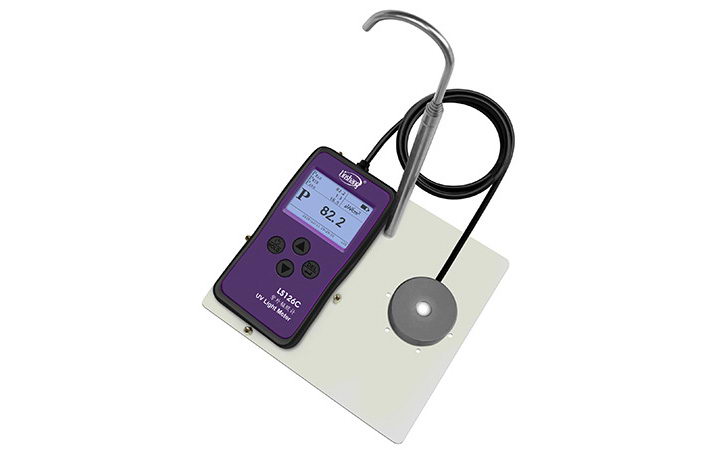UV Radiation Intensity Testing Requirements
Ultraviolet light has a strong bactericidal effect, and the detection of ultraviolet radiation intensity requires the use of a professional UV-C type ultraviolet light meter. And the test should be in accordance with "Disinfection Technical Specifications".
Ultraviolet light has a strong bactericidal effect, especially ultraviolet light in the UVC band, which is called short-wave sterilizing ultraviolet light; The UVC light meter is suitable for sterilization in the sanitary, medical, biological research, pharmaceutical industry and food industry and involves the use of ultraviolet radiation intensity detection. UV disinfection has been widely used in many industries such as drinking water, pure water, electronics, air purification and disinfection, and environmentally friendly sewage treatment.
The sterilization principle of the UVC ultraviolet disinfection lamp is that the ultraviolet light of 254 nm wavelength is easily absorbed by the living body, and acts on the DNA of the genetic material of the living body, so that the DNA is destroyed and the bacteria are killed. UV killing includes bacterial propagules, spores, mycobacteria, coronavirus, fungi, rickettsia and chlamydia. Any surface, water and air contaminated by the above viruses can be disinfected by ultraviolet light.|
The use of UV germicidal lamps must enhance the monitoring of the UV lamp irradiation intensity and is an important task in UV disinfection applications. Each unit shall, in the use of the ultraviolet germicidal lamp, perform a radiation intensity test on the periodic use of the ultraviolet radiation meter for three to six months. It is found that the lamp with insufficient strength should be replaced in time, and the ultraviolet radiation meter should be calibrated once a year to ensure accurate performance. When detecting ultraviolet radiation intensity, it must be monitored according to the measurement conditions in the technical specifications of the health department, under the conditions of voltage 220V, temperature 20 °C, RH
According to the requirements of the "Disinfection Technical Specifications", the radiation intensity of the new UV lamp should be greater than 100VW/cm2 (the distance is 1m. The minimum radiation intensity of the lamp in use should reach 70VW/cm2, but the irradiation time should be extended. According to the formula of "the dose of ultraviolet radiation is equal to the radiation intensity multiplied by the irradiation time", the extended irradiation time required for the abnormal strength can be obtained, and it can be seen that the same sterilization effect can be obtained for the high intensity short time or low intensity for a long time. If the intensity of the ultraviolet light source is lower than 40 VW/cm2, the extended irradiation time cannot achieve satisfactory sterilization effect, that is, the application should be suspended. Do not think that the ultraviolet light tube only needs to be bright to have a sterilization effect.
Be aware that each microorganism has its own UV kill dose threshold. The bactericidal dose (K) is the product of the irradiation intensity (I) and the irradiation time (t), K = It. It can be seen from the formula that the same sterilization effect can be obtained by high-intensity short-time or low-intensity long-time irradiation. However, if the ultraviolet intensity is less than 40 uw/cm2, the irradiation time can't be extended to achieve a satisfactory sterilization effect, and there is a problem of damage repair of microorganisms in the middle, and the irradiation intensity is intentionally increased.
To select the best uv meter, please read "How to Select the Best UV Light Meter For Your Application?".
